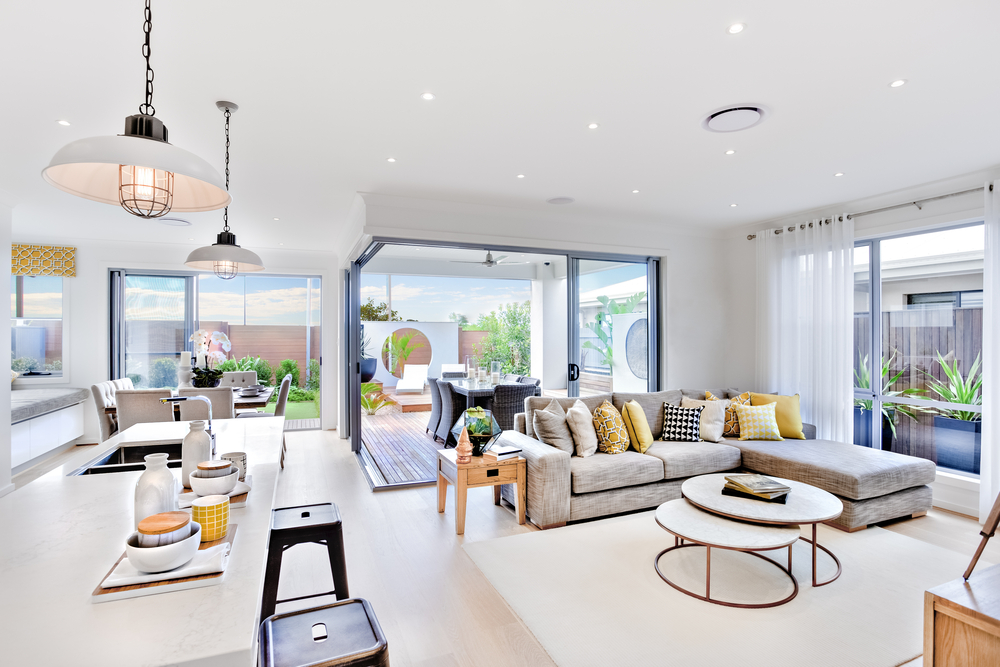Choosing the right air conditioning system for your home is more than just a matter of comfort—it’s an investment in your quality of life. Our team at Gemin3 Air Conditioning understands that the myriad options available for purchase can be overwhelming, which is why we created the following comprehensive guide. It will discuss the various types of air conditioning in Sydney available, including split systems, multi-split systems, ducted systems, and portable units, each with their unique features and suitable applications. Understanding the specific advantages and limitations of each system will help you make an informed choice based on the size and layout of your residence, as well as your personal cooling needs. This section is also crucial for anyone looking to optimise their investment while minimising their environmental footprint.
Types of Air Conditioning Systems and Their Features
Choosing the right air conditioning system is crucial for comfort, efficiency, and energy savings. Here’s a detailed look at the different types of air conditioning systems available and their unique features:
1. Split System Air Conditioners
Split system air conditioners are one of the most popular choices for residential and small office spaces in Sydney. These systems consist of two main components: an outdoor unit containing the compressor and condenser, and an indoor unit that houses the evaporator coil and air handling unit.
Features:
– Energy Efficiency: Many split systems come with high Energy Star ratings, making them cost-effective in terms of energy use.
– Quiet Operation: The noisier components are located outside, which significantly reduces the noise levels indoors.
– Aesthetic Design: Indoor units are sleek and can blend seamlessly with interior decor.
– Flexible Installation: Requires minimal ductwork and can be installed in various locations within a building.
2. Multi-Split System Air Conditioners
Similar to the split systems, multi-split systems connect multiple indoor units to a single outdoor unit. This setup is ideal for buildings with limited space for outdoor units or for cooling various rooms individually.
Features:
– Independent Control: Each indoor unit can be controlled independently, allowing for personalised temperature settings in different rooms.
– Space Saving: Reduces the outdoor space required as multiple indoor units connected to one outdoor unit.
– Energy Efficient: Only the indoor units in use consume power, which can lead to energy savings.
3. Ducted Air Conditioning Systems
Ducted systems are often chosen for their ability to provide central heating and cooling to larger spaces such as entire homes or commercial buildings. These systems feature a central unit connected by ductwork that distributes air through vents located throughout the property.
Features:
– Uniform Cooling/Heating: Offers consistent temperature control across all rooms.
– Design Flexibility: Ducts can be tailored to suit the specific layout of a building.
– Invisible Integration: Components are hidden in the roof or under the floor, which preserves the building’s aesthetic.
– Zoning Capabilities: Allows different areas to be heated or cooled at different times, enhancing comfort and efficiency.
4. Portable Air Conditioners
Portable air conditioners are free-standing units that can be moved from one room to another. They are ideal for situations where window configurations or building regulations prevent the installation of window units.
Features:
– Mobility: Easy to move where cooling is needed, making them highly versatile.
– No Installation Required: Unlike other systems, portable air conditioners do not require permanent installation.
– Cost-Effective: Generally less expensive than installing a fixed system.
5. Window Air Conditioners
Window air conditioners are compact units designed to fit within a window frame. They are a convenient solution for small spaces or for supplementing the cooling needs of individual rooms.
Features:
– Cost-Effective: Generally cheaper to purchase and install than split or ducted systems.
– Easy Installation: Can be installed in a matter of hours with minimal disruption.
– Space-Saving: Does not take up floor space, which is beneficial in smaller rooms.
6. Cassette Air Conditioners
Cassette units are mounted on the ceiling, making them ideal for commercial spaces like offices or shops where wall space is at a premium. They are designed to fit into suspended ceilings and distribute air evenly across large areas.
Features:
– Aesthetic Appeal: Blends into the ceiling, providing a neat and unobtrusive appearance.
– Powerful Performance: Ideal for larger spaces, providing even air distribution.
– Flexible Installation: Can be installed in various ceiling types, including suspended ceilings.
Choosing the Right System
Each type of air conditioning system offers distinct advantages, and the choice largely depends on the specific requirements of the space, such as size, layout, and individual cooling needs.
Energy Efficiency and Cost Considerations
When selecting an air conditioning system for your home, energy efficiency and cost considerations are paramount. Not only do these factors impact your immediate budget, but they also affect your long-term expenses and environmental footprint. Here’s a detailed guide to help you navigate these crucial aspects.
Understanding Energy Efficiency Ratings
SEER and EER Ratings
The Seasonal Energy Efficiency Ratio (SEER) and the Energy Efficiency Ratio (EER) are critical metrics when assessing air conditioning units. SEER indicates the efficiency of the equipment across the cooling season, whereas EER reflects the system’s energy efficiency at peak day operations. In Australia, look for units with a higher SEER and EER rating as they consume less power, leading to lower electricity bills and reduced environmental impact.
The Importance of Inverter Technology
Modern air conditioners equipped with inverter technology adjust the compressor speed based on the temperature demand. This adaptation not only conserves energy but also maintains a more consistent room temperature compared to conventional units. Inverter models can be more expensive upfront but usually result in significant savings in energy consumption and cost in the long run.
Cost Considerations
Initial Investment vs. Long-Term Savings
While higher-rated energy-efficient air conditioners might come with a steeper initial cost, they tend to offer greater long-term savings through reduced utility bills. It’s important to calculate the payback period — the time it takes for the energy savings to offset the initial higher cost of the equipment — to understand the true value of investing in a high-efficiency model.
Government Rebates and Incentives
In NSW, the government offers rebates and incentives for installing energy-efficient air conditioning systems. These financial incentives can significantly lower the upfront cost and make high-efficiency models more accessible. Always check current offers from the local government or energy suppliers when considering a new installation.
Choosing the Right Size
Room Size and Layout
Selecting the correct size of air conditioning unit is crucial for energy efficiency. An undersized unit will struggle to cool your home, running continuously and using excessive energy. Conversely, an oversized unit will cycle on and off too frequently, causing unnecessary wear and tear and inefficient energy use. Consider both the square footage of the space and factors such as ceiling height, window size, and exposure to sunlight.
Professional Assessment
It is advisable to have a professional perform a detailed assessment of your home to determine the most appropriate size and type of air conditioning system. This assessment should take into account not only the size of the area to be cooled but also aspects like insulation quality and airflow dynamics, which significantly influence the unit’s efficiency.
Operational Costs and Maintenance
Energy Prices
Be aware of the energy price per kilowatt-hour in your area as this affects the overall running costs of your air conditioning system. Choosing a more energy-efficient unit can be particularly beneficial in regions with higher electricity rates.
Regular Maintenance
Regular maintenance of your air conditioning system is crucial to keep it running at its best. Regular maintenance can prevent the inefficiencies associated with dirt and neglect, which can increase energy consumption by up to 15%. Schedule regular check-ups and cleaning to keep your system running optimally.
By considering these detailed factors under energy efficiency and cost considerations, you can choose an air conditioning system that not only suits your immediate needs but also contributes to sustainable living and offers economic benefits over time. Selecting the right system with these considerations in mind ensures comfort, efficiency, and cost-effectiveness for years to come.
Comfort and Performance: Noise Levels, Air Quality, and Filtration
When selecting the right air conditioning system for your residence, prioritising comfort and performance is crucial. This not only involves the system’s cooling and heating capabilities but also extends to how it impacts the living environment through noise levels, air quality, and filtration. Let us delve into these essential factors that significantly influence daily life and overall home comfort.
Noise Levels
Understanding Noise Levels in Air Conditioning Systems:
Air conditioners come with a decibel (dB) rating, which measures the intensity of the sound they emit during operation. Residential air conditioning systems typically range from about 40 dB to 60 dB. To put it into perspective, 40 dB is comparable to a quiet library, while 60 dB is about the level of a normal conversation. Lower dB ratings are preferable for quieter environments, which is an important consideration for bedrooms, studies, or any room where peace is valued.
Technologies Reducing Noise:
Advanced models of air conditioners are equipped with noise-reduction technologies. Features such as insulated compressor compartments and variable speed fans help minimise operational sound. Furthermore, the design and installation of the system, including proper placement and secure mounting, can significantly reduce vibration and, consequently, noise.
Choosing the Right Unit:
Select units with lower dB ratings and consider their placement relative to living and sleeping areas. It may also be beneficial to look for systems that feature “silent mode” settings or specific night-time settings that adjust operations to quieter levels during hours when lower noise is crucial.
Air Quality
Importance of Indoor Air Quality:
Indoor air quality is a critical component of a healthy home environment, especially in cities like Sydney where pollen, pollution, and humidity can affect wellbeing. Air conditioners that effectively manage and improve indoor air quality can help in reducing allergens, dust, and other airborne contaminants.
Features Enhancing Air Quality:
Many modern air conditioning systems are equipped with advanced filtration techniques that can screen out pollutants and improve the breathability of the air. Features like HEPA (High-Efficiency Particulate Air) filters can trap fine particles such as pollen, dust mites, and tobacco smoke. Some systems also include activated carbon filters which reduce odours and volatile organic compounds (VOCs).
Regular Maintenance for Optimal Performance:
To maintain optimal air quality, regular maintenance of the air conditioning system is essential. This includes cleaning or replacing filters every three to six months, checking for duct leaks, and ensuring that the unit is free from dust and debris.
Filtration
Understanding Filtration Options:
Filtration in air conditioning systems is not just about improving air quality; it also protects the system itself by preventing the buildup of dust and debris that can impair its efficiency and lifespan. When choosing a system, consider the types of filters it uses and the level of maintenance they require.
MERV Ratings:
Filters are rated based on their Minimum Efficiency Reporting Value (MERV), which indicates their ability to capture larger particles between 0.3 and 10 microns. Residential systems generally utilise filters rated between MERV 7 and 13, which are sufficient for capturing most household pollutants.
Enhanced Filtration Technologies:
For households needing higher filtration due to allergies or respiratory issues, it may be worth investing in a system that can accommodate HEPA filters or has built-in ionisers and UV lamps. These technologies can further enhance air quality by neutralising bacteria, viruses, and mould spores.
By considering these aspects of noise levels, air quality, and filtration, homeowners can choose an air conditioning system that not only maintains a comfortable temperature but also contributes to a healthier and more enjoyable living environment. Selecting the right system involves understanding these factors in detail and considering how they fit into your specific home layout and health needs.
Smart Home Integration and Zoning Systems
Choosing the right air conditioning system for your residence isn’t just about selecting a unit that cools and heats effectively. In today’s technologically advanced world, integrating your air conditioning system with smart home technology and implementing zoning systems can significantly enhance comfort, convenience, and energy efficiency. Here’s what you need to know about these innovative solutions.
Understanding Smart Home Integration
What is Smart Home Integration?
Smart home integration involves connecting your air conditioning system to your home’s smart technology network, allowing you to control the system via devices such as smartphones, tablets, or voice-activated assistants like Amazon Alexa or Google Assistant. This connectivity offers a seamless way to manage your home’s climate, even remotely.
Benefits of Smart Home Integration
1. Enhanced Convenience: Adjust your home’s temperature from anywhere, at any time, using your mobile device.
2. Increased Energy Efficiency: Programmable features and machine learning enable your system to optimise energy use, reducing costs and environmental impact.
3. Improved Comfort: Tailor cooling and heating patterns to your daily schedule, ensuring always optimal comfort when at home.
4. Maintenance Alerts: Get notified about maintenance needs and system inefficiencies directly on your smart device.
Choosing a Compatible System
Ensure the air conditioning system you choose can seamlessly integrate with the existing smart home ecosystem in your residence. Systems that support open standards like Zigbee or Z-Wave are generally more adaptable to various smart home devices.
Implementing Zoning Systems
What is a Zoning System?
A zoning system allows you to divide your home into different zones, each controlled independently when it comes to cooling and heating. This means different areas can be set to different temperatures, catering to the varying comfort needs of each space or the preferences of different family members.
Benefits of Zoning Systems
1. Energy Efficiency: By heating or cooling only the zones in use, you significantly reduce energy consumption.
2. Personalised Comfort: Each zone can be adjusted for individual comfort, which is especially beneficial in households where occupants prefer different temperatures.
3. Reduces Wear and Tear: By minimising the operation time of your system in seldom-used areas, you extend the life of your HVAC equipment.
Types of Zoning Systems
– Manual Zoning Systems: These require physical adjustments to control dampers within the ductwork.
– Automatic Zoning Systems: These are connected to your smart home system and adjust automatically based on the settings you’ve programmed for each zone.
Installation Considerations
Implementing a zoning system can be complex, especially in existing structures. It involves placing multiple thermostats and installing dampers inside the ductwork. It’s essential to consult with a professional who can advise on the feasibility and oversee the installation to ensure it is done correctly.
Integration with Smart Home for Optimal Functionality
To get the most out of both smart home technology and zoning systems, integrating these two systems can lead to a highly efficient, user-friendly home environment. Here’s how they can work together:
– Centralised Control: Manage all zones from one central app, adjusting settings per zone or turning off zones not in use.
– Automated Adjustments: Use geofencing and occupancy sensors to automatically adjust temperatures when you leave or enter a zone.
– Voice Commands: Implement voice control through smart speakers to adjust settings in any zone without needing to manually interact with a thermostat.
By considering smart home integration and zoning systems when choosing your air conditioning system, you ensure that your home not only achieves optimal comfort but does so with utmost efficiency and ease of use. These modern solutions provide a customisable, forward-thinking approach to climate control that more homeowners are finding indispensable in their daily lives.
Conclusion
Choosing the right air conditioning system is a decision that impacts not only your comfort but also your home’s energy efficiency and overall functionality. By carefully considering the different types of systems available, understanding their features, and integrating modern smart home and zoning technologies, you can create a comfortable, efficient, and responsive living environment tailored to your needs. Whether you’re looking to cool a single room or an entire home, Gemin3 Air Conditioning is here to help you navigate the options and find the best solution for your space. Trust our expertise to guide you in making a decision that enhances your quality of life and brings lasting value to your home.






